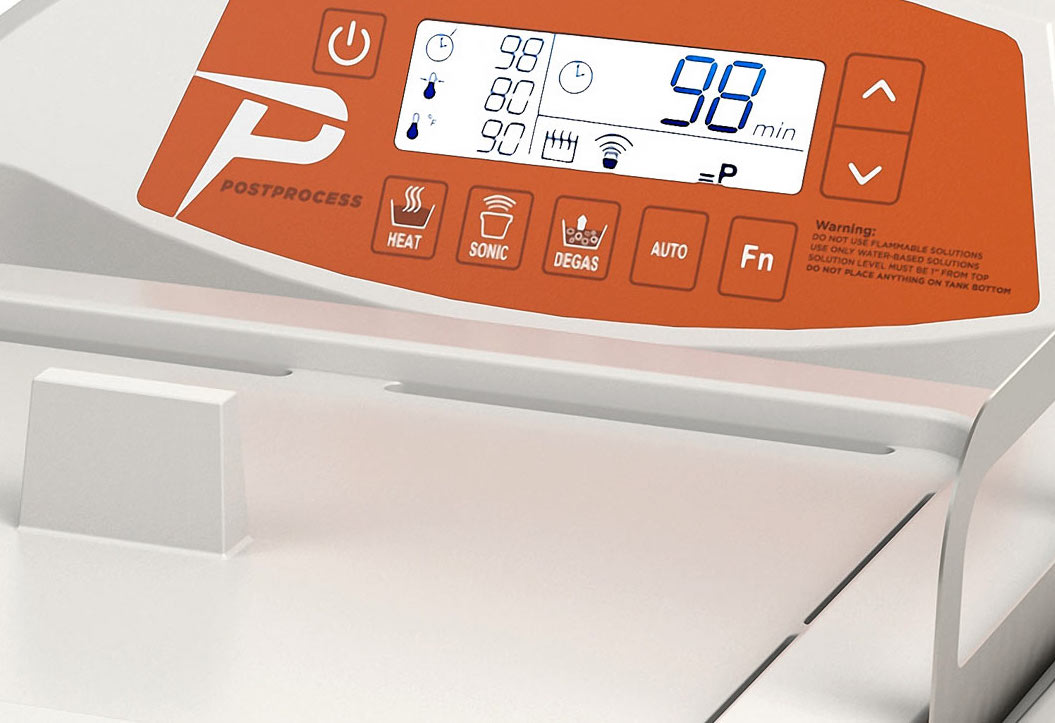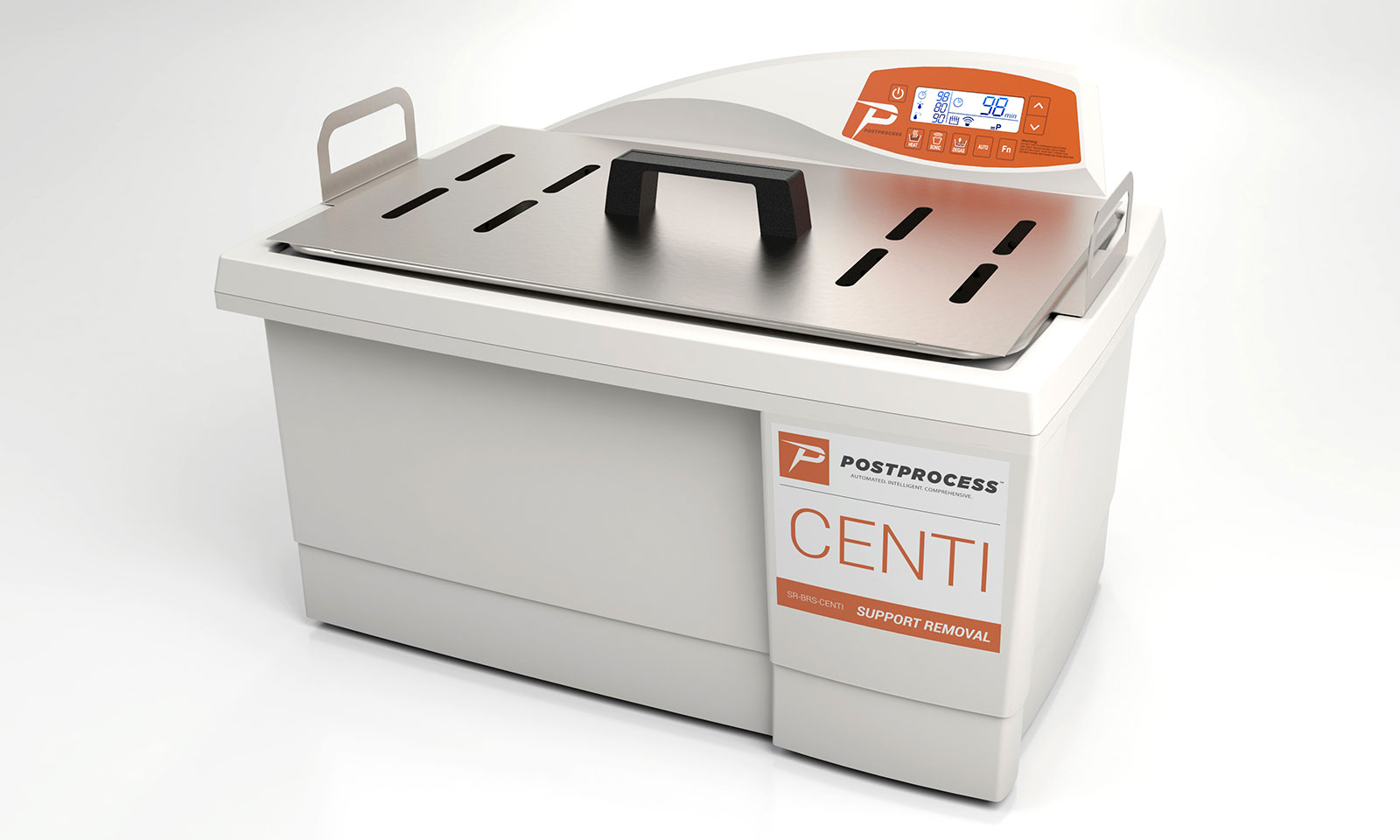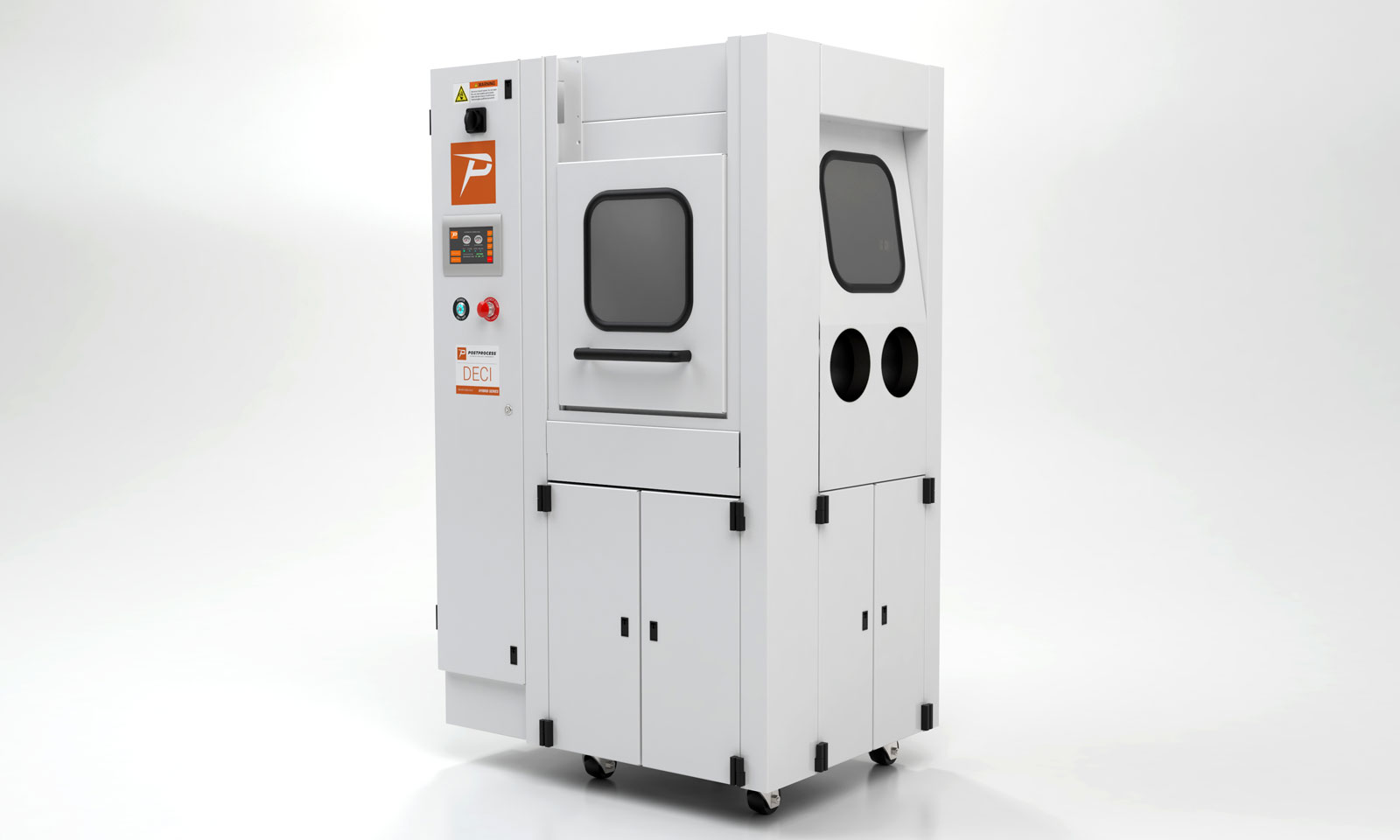
If there’s one dirty secret of 3D printing, it’s the post-printing experience.
3D printed objects are rarely “ready to go” when they are finished printing. Often that’s just the beginning of the process to actually completing the part.
There are two main post-processing activities: removing support material and surface finishing.
The former is a requirement to enable the printing of complex shapes, where the object’s geometry develops overhangs. Virtually all 3D printers enable such handling, but support removal after printing can be an arduous task.
If you’re lucky support structures peel off easily. But that’s very often not the case. Sometimes supports are made in a material different from the actual part, which can make removal a bit easier, but often supports are made from the same material and are literally fused to the part itself.
Surface finish is the other major post processing activity. This is required either to eliminate the layering effect observed when a printer produces coarse layers, or to remove the inevitable stumps left after support structure removal. Most times this is done by manual sanding, which can be extremely tedious. Sometimes it’s done by tossing the print into an industrial tumbler that’s been re-purposed. There are chemical approaches as well, but they tend to work only with certain materials.
What is one to do? One option is to obtain purpose-built automated post processing equipment, such as made by New York state-based PostProcess. This company produces an interesting line of products that form a complete solution to both of these post-processing issues.

The company markets a line of support removal devices, others that provide surface finishing and one machine that actually does both!
I say it’s a complete solution because the company provides a series of detergents that are used in the support removal devices to match the requirements of the specific support material used in the print. They have also designed their removal systems to provide optimal heating and agitation to quickly remove support structures from a variety of commercial 3D printing systems. Note that these machines not only use agents to quickly dissolve the supports, but the parts are also rinsed and dried afterwards.
Their two surface finishing systems use very specific tumbling media to achieve a specified “Roughness Average”, while maintaining dimensional accuracy and detail. They explain:
We first understand the 3D printing methodology, material and geometry to effectively apply our multiple technologies, including energy optimization, tightly controlled heat, non-traditional vibratory energy and eco-friendly consumables to accurately finish the surface to meet your requirements.
This is a lot different than simply dropping your prints into a rock tumbler.

Finally, the company also produces a single “Hybrid” machine that actually performs both functions in one unit. The “DECI Duo” can remove supports and provide surface finishing on a very wide variety of part materials, ranging from flexible resins to metal 3D prints. (Actually, I believe they cannot remove supports on metal prints, but can do the surface finishing.)
Their software uses experience-based algorithms to provide optimal use of time and energy to achieve proper and consistent post processing results.
That’s something every 3D printing workshop can use.
Via PostProcess

